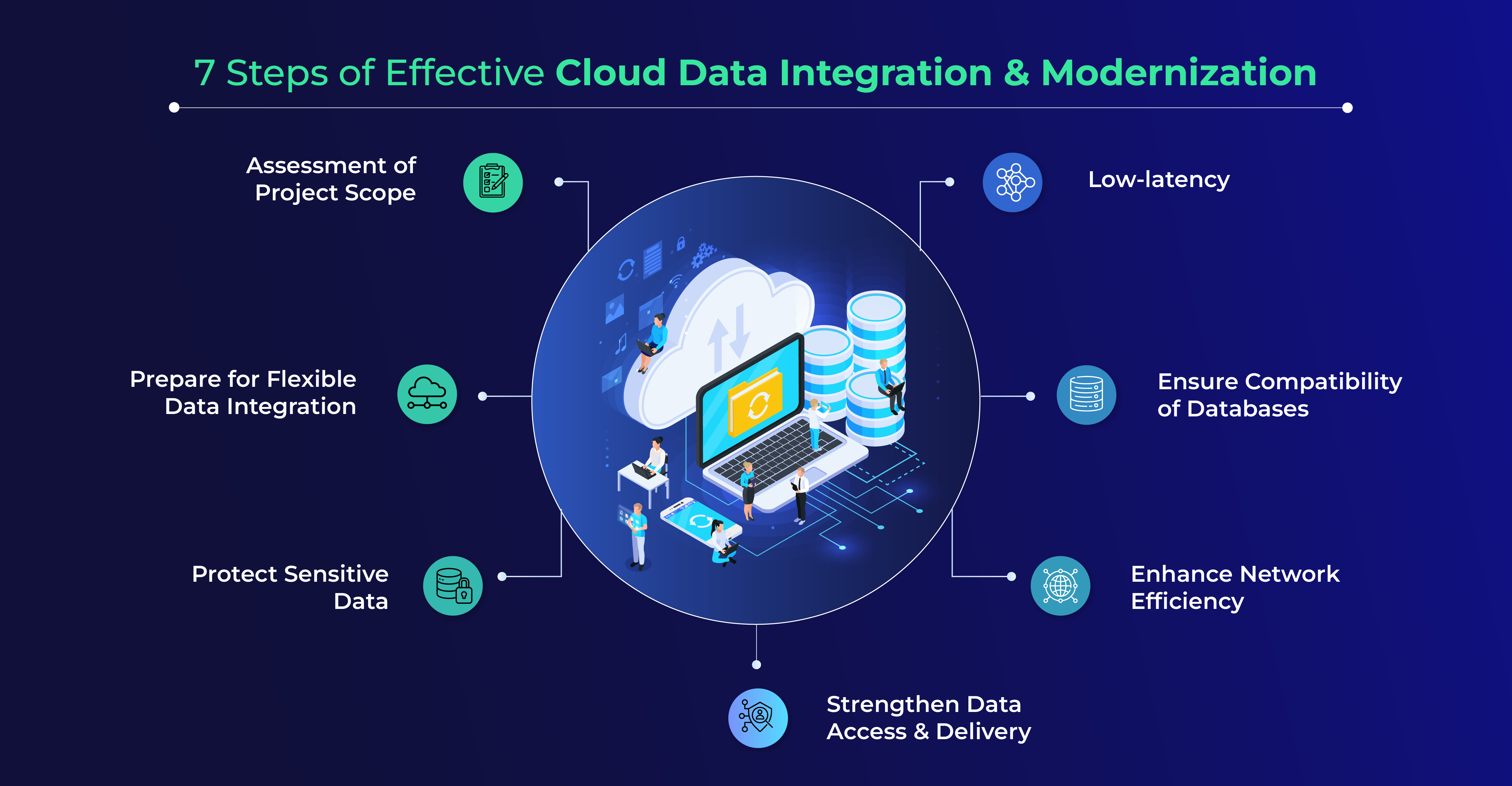Control Costs, Solve Resource Constraints, and Simplify Multi-cloud Complexity With Cloud-native ETL and ELT
Organizations today are seeking scalability, flexibility, and cost-effectiveness using cloud data integration for digital transformation. Enterprises want to control costs and simplify multi-cloud complexity with cloud modernization.
With increasing digitalization, cloud migration and modernization are interchangeably used by organizations.
Compared to migration, modernization is a broader perspective of transformative changes to applications, infrastructure, data, and business processes. The “whole cloud” and the managed services opportunities around the cloud will reach $1.3 trillion by 2025, says IDC’s worldwide forecast. The top reasons for organizations to move toward modernization are agility, flexibility, and scalability.
Today, organizations migrate on-premise applications to the cloud to drive agility and quick decision-making. Cloud data modernization helps to identify opportunities to generate new revenues by providing new data insights to gain a competitive advantage. The process must be driven by a data governance strategy involving data residency laws, regulatory requirements, and other security mandates.
Data modernization involves transferring data from legacy databases to cloud-based databases. Cloud data warehouses and lakes empower these data modernization processes to leverage analytics with the right data governance strategy and democratization measures.
7 Steps of Effective Cloud Data Integration & Modernization
By implementing 7 key steps, companies can continuously optimize modern cloud data integration and ensure high performance, security, and availability across heterogeneous data sources.

1.Assessment of Project Scope: To carefully roll out data integration in the cloud, the project scope must be studied well to ensure you can keep minimum disruption, related expenses, and proper workload handling over time.
For instance, migrating on-premise data to a cloud data warehouse (CDW) not only needs porting database tables into a new environment but also requires data re-modeling of newly generated data to meet cloud data warehouse requirements. The following assessment should be performed before modernization:
- The quality & consistency of existing data to fit in a new environment.
- Data transformation should be reliable & repeatable for re-mapping for incremental processes.
- Automate possible data preparation steps to keep workloads, budgets, and timelines under control.
2. Prepare for Flexible Data Integration: Data integration & modernization is done for the foreseeable future. The following parameters should be considered for flexible data integration:
- Choose the right tools to save time & reduce complexity for further data integration.
- Estimate how much re-coding, re-development, or re-configuration will be required, and extend the integration pattern.
- Plan for incremental changes to IT infrastructure and associated data integration patterns.
- Consider data residency regulations, security, and sensitivity concerns for data migration.
3. Protect Sensitive Data: Due to data governance, control, data security can inadvertently be compromised while collecting, transforming, and moving data. The standards for transferring data to the cloud must be carefully studied to avoid breaking the compliances related to data privacy, residency, and data security. Following practices must be considered to protect sensitive data at all times:
- Review data-related access permissions and re-align them with the new environment.
- Never work with actual production data directly. De-identifying, masking, and anonymizing would be better.
- Maintain critical data lineage information for regulatory requirements & operational analytics during data relocation & renovation.
4. Strengthen Data Access & Delivery: How data will be accessed and delivered with the growing volume and speed will future-proof your data integration pattern. Make sure to strategize the following:
- Ensure that data integration tools & software can integrate data across all platforms and legacy systems that source high-volume transaction data.
- Ensure to have a solution that is scalable and flexible to handle all new data flows.
- Enhance Network Efficiency: High-speed network connectivity is essential for increasing access to data. Cloud ingress and egress depend on bandwidth requirements of data transfer rates. The data transfer rates can be improved by compressing data and increasing the bandwidth.
The network bandwidth is also finite, so you cannot use it beyond its capacity. Hence, a suitable network communication protocol must be followed.
5. Ensure Compatibility of Databases: Best data integration practices include compatibility across various databases, file systems, applications, platforms, IaaS, PaaS, SaaS, etc. This offers deployment choices and flexibility to make changes in hybrid cloud environments.
6. Low-latency: Organizations look for real-time data integration solutions because of the impact of cloud-based technologies on low-latency data access. In addition, this lowers the cost and improves customer satisfaction (CX) by responding instantly.
Organizations performing data modernization & migration are more likely to operate in a hybrid cloud environment as it provides full synergy between cloud and IT infrastructure. Hence organizations choose to modernize applications & data across this hybrid cloud.
Conclusion:
Data Governance will be the Cornerstone of Data Modernization.
Organizations need to integrate and combine data sources in new and creative ways to extract insights across fragmented data architectures to realize the value of data, especially from a siloed system. For better results and ROI, understanding the importance of data governance will be vital as this will define how data must be classified and how it should be accessed.
Organizations that choose to modernize projects will need to review their capabilities around tooling, infrastructure, skill sets, operations, and investments. Every part of data remediation, migration, and integration with the cloud will need skilled people at every level. Hence, future organizations must leverage uniquely qualified people to modernize cloud data.
Techment helps organizations to modernize their data and help them migrate. We assist with customer-centric data management platforms by enabling customized solutions tailored to clients’ specific needs. To know more about our cloud-data work, connect with us.
 All Posts
All Posts